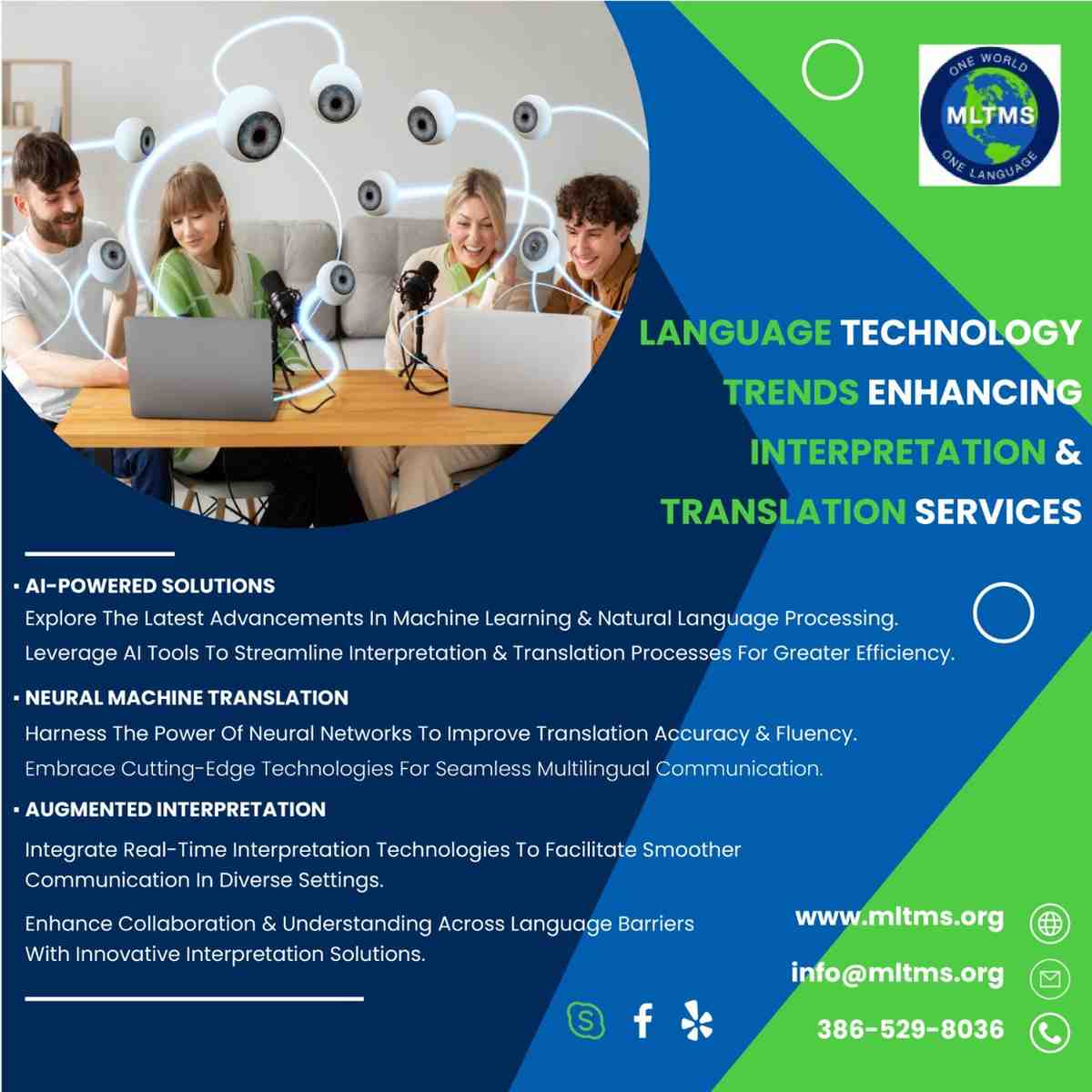Globalisation is a dominant force in today’s interconnected globe, and as a result, there is an unparalleled demand for effective interpretation and translation services. Accurate and fast language interpretation and translation are becoming essential as organisations grow internationally, people relocate abroad, and worldwide communication becomes increasingly common. Thankfully, developments in language technology are transforming how we overcome linguistic barriers and enabling more easy and seamless communication than ever before.
Leading this change are trends in language technology, which are always changing to satisfy the needs of a more varied and dynamic world. These days, it’s unthinkable how these technologies—like machine learning and artificial intelligence—are improving interpretation and translation services. Examining some of the major themes influencing how language services will develop in the future:
Machine learning and artificial intelligence: In the field of language technology, machine learning and artificial intelligence (AI) have become game-changers. These technological advancements improve computers’ comprehension and production of human language by allowing them to learn from enormous volumes of data. AI-powered solutions in the context of interpretation and translation services can recognise context, analyse linguistic patterns, and translate text more accurately in real time. Furthermore, multilingual communication is being made easier by AI-powered chat bots and virtual assistants, which enable businesses to easily communicate with clients who speak multiple languages.
Natural Language Processing (NLP): Another game-changing development that is redefining translation and interpretation services is NLP. The goal of natural language processing (NLP) is to enable computers to comprehend, interpret, and produce meaningful, contextually relevant human language. Language technology systems can process large volumes of text, extract important information, and generate precise translations that capture linguistic subtleties by utilizing NLP algorithms. This raises the standard of communication between people who speak different languages and increases the effectiveness of translation services generally.
Neural Machine Translation: In the realm of automated translation, neural machine translation (NMT) is a noteworthy development. NMT uses artificial neural networks instead of conventional rule-based or statistical machine translation techniques to translate text between languages. With this method, NMT systems can comprehend intricate linguistic structures and generate translations that sound more fluid and authentic. Because NMT offers quicker response times and better translation accuracy, it has grown in popularity in the interpretation and translation services industry.
Multi-modal Communication: As multimedia information on the internet continues to develop, there is an increasing demand for interpretation and translation services that are capable of handling a variety of communication formats, such as text, voice, images, and video. Multi modal language technology solutions offer complete language support across a variety of media forms by combining several modalities. For instance, real-time translation features in video conferencing platforms allow users to converse fluently even when faced with language obstacles, promoting global contentedness and collaboration.
Personalization and Custom: With the increased demand for language services, personalization and customization are becoming more and more important. The customisation of language technology solutions to match the unique requirements and preferences of individual users and organisations is becoming a more prominent trend in the field. Customisation and personalization are important factors that propel innovation in language technology, whether it is modifying translation models to handle terminology specific to a given domain or incorporating cultural quirks into interpreting services.
In summary, advances in language technology are transforming the market for interpreting and translating services and bringing in a new era of accessible, accurate, and efficient communication. AI, machine learning, NLP, and NMT are just a few of the technological innovations that are enabling people and businesses to communicate with people all over the world and get over language barriers. The future of language services seems brighter than ever thanks to the rapid advancement of technology, which offers unmatched chances for cross-cultural communication, understanding, and cooperation.


